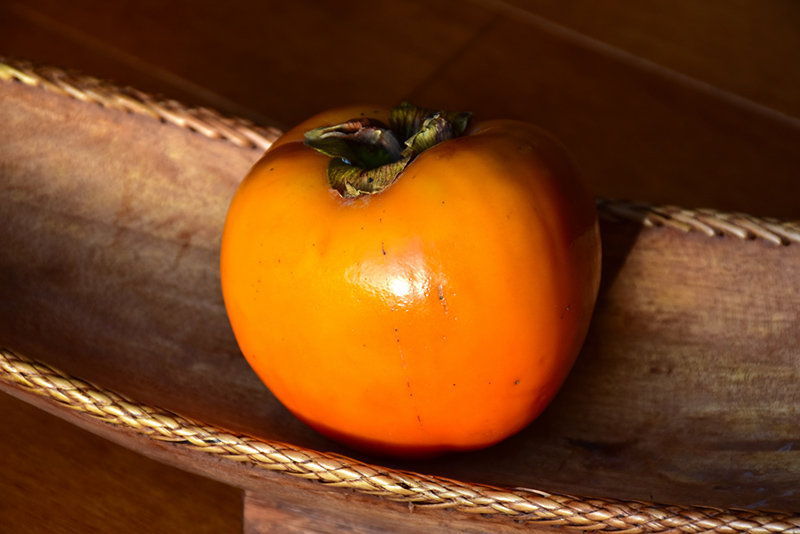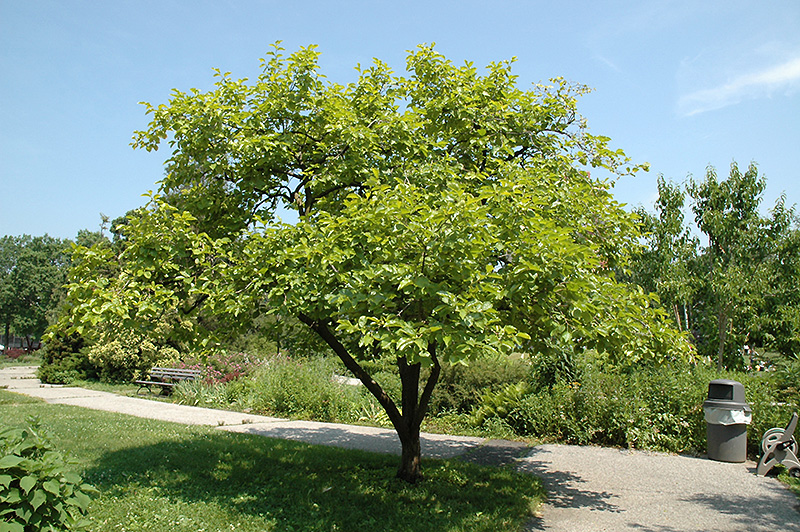Height: 25 feet
Spread: 25 feet
Sunlight:
![]()
![]()
Hardiness Zone: 7b
Other Names: syn. D. chinensis Blume, Asian Persimmon, Keg Fig
Description:
A beautiful multi-stemmed fruit tree that is sometimes single stemmed; flowers in mid-summer and fruit ripens in mid-November; requires male and female trees; typically round-topped with an open, erect habit; shelter from damaging winds
Edible Qualities
Japanese Persimmon is a medium-sized tree that is typically grown for its edible qualities, although it does have ornamental merits as well. It produces orange round fruit (technically 'pomes') which are usually ready for picking from late summer to mid fall. The fruits have a sweet taste.
The fruit are most often used in the following ways:
- Fresh Eating
- Preserves
Features & Attributes
Japanese Persimmon has bluish-green foliage with brown undersides on a tree with a round habit of growth. The glossy oval leaves turn orange in fall. The fruits are showy orange pomes carried in abundance in mid fall. The fruit can be messy if allowed to drop on the lawn or walkways, and may require occasional clean-up.
This is an open multi-stemmed deciduous tree with a more or less rounded form. Its average texture blends into the landscape, but can be balanced by one or two finer or coarser trees or shrubs for an effective composition. This is a high maintenance plant that will require regular care and upkeep, and is best pruned in late winter once the threat of extreme cold has passed. It is a good choice for attracting birds to your yard. It has no significant negative characteristics.
Aside from its primary use as an edible, Japanese Persimmon is sutiable for the following landscape applications;
- Accent
- Shade
- Vertical Accent
- Orchard/Edible Landscaping
Planting & Growing
Japanese Persimmon will grow to be about 25 feet tall at maturity, with a spread of 25 feet. It has a low canopy with a typical clearance of 3 feet from the ground, and should not be planted underneath power lines. It grows at a medium rate, and under ideal conditions can be expected to live for 60 years or more. This is a female variety of the species which requires a male selection of the same species growing nearby in order to set fruit.
This tree can be integrated into a landscape or flower garden by creative gardeners, but is usually grown in a designated edibles garden. It does best in full sun to partial shade. It prefers to grow in average to moist conditions, and shouldn't be allowed to dry out. It is not particular as to soil type or pH. It is somewhat tolerant of urban pollution, and will benefit from being planted in a relatively sheltered location. This species is not originally from North America.








